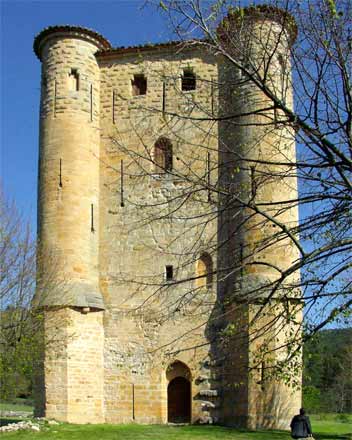Dictionnaire d'Architecture
K
KIOSQUE
Ce mot est emprunté de la langue turque, et l’objet qu’il exprime est aussi un emprunt fait aux usages des peuples du Levant, où l’on met au nombre des besoins indispensables de la vie, le besoin de passer des heures entières dans un repos absolu, à prendre le frais, et à jouir en silence de la vue de la nature.

The lowest of these was mostly used as a dungeon for prisoners; others were devoted to the reception of military stores and instruments of war; and near the top of the keep were the apartments of the castellan, or governor. A Well and a Chapel were almost universal accompaniments to the keep. The perfection to which the art of fortification was formerly carried, is fully manifested by an inspection of the numerous keep-towers of Great Britain. The late Edward King, in Munimenta Antigua, and in his Observation on Ancient Castles, in the fourth and sixth volumes of the Archceologia, has noticed and described some of their pecu¬liarities. Woolnoth's Ancient Castles, and the fourth volume of the Architectural Antiquities of Great Britain, may also be referred to as containing representations and descriptions of several of these buildings
KERF
The way made by a saw through a piece of timber, by displacing the wood with the teeth of the saw.
KET
An instrument for driving back the bolt of a lock. The key of a floor is the board last laid down. In joinery generally a key is a piece of wood let into the back of another in the contrary direction of the grain, to preserve the last from warping.
Key STONE
The highest central stone of an arch.
KEYS
In naked flooring are pieces of timber fixed in between the joists by mortise and tenon. When these are fastened with their ends projecting against the sides of the joints, they are called strutting-piece
KILDERKIN
A measure containing eighteen gallons of beer, and sixteen ale measure.
KILN
A building for the accumulation and retention of heat in order to dry or burn certain materials deposited within them.
KIBNELLE, KERNEL, KIRNAL
probably a corruption of the word crenelle, with which its meaning exactly corresponds. (See CRENELLE.)
KING-POST
the central vertical timber of a trussed roof. When, instead of a single upright rising to the ridge of a roof, one is set up at each side, they are called
KNEE
A part of the back of a handrailing, of a convex form, being the reverse of a ramp, which is also the back of a handrail, but is concave. The term knee is also given to any small piece of timber of a bent or angular form.
KNEE PIECE or KNEE RAPTER
An angular piece of timber, to which other pieces in the roof are fastened.
KNOB, KNOPPE, KNOT
the boss, or ornamental key-stone of a ribbed and vaulted roof: an ornament formed by a cord, or cords, twisted in a fantastic manner, and borne as a badge by certain noble families
KNOTTING
The preliminary process in painting, to prevent the knots appearing, by covering them with a coat composed of red lead, then white lead and oil, and lastly, a coat of gold size. Sometimes leaf silver is also used.
KNUCKLE
The joint of a cylindrical form, with a pin as an axis, by which the straps of a hinge are fastened together.